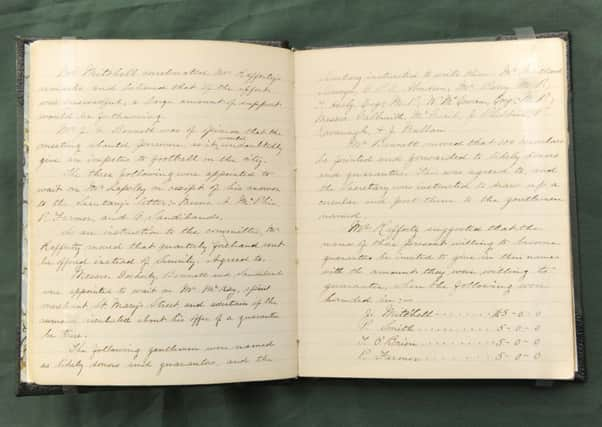Hibs in 50 objects: No.5: Original minute book


Hibs offered to lend Celtic a number of their players for their initial games, but their naivety proved to be the undoing of the club. The newly-formed Glasgow side had seven of their original 11 players signed from the Capital outfit.
Hibs’ problems quickly mounted. Two more players left for England and their crowds numbered just a few hundred, and on occasion they had to recruit from amongst them to field a team.
Advertisement
Hide AdAdvertisement
Hide AdBy the end of autumn 1890, the end was in sight. They’d been told to leave Easter Road and their last appearance came on February 14, 1891 when they were beaten 6-1 by Leith Athletic.
One group tried to continue as Leith Hibernians based at Hawkhill, but managed just one game and didn’t survive the summer break. However, behind the scenes efforts were ongoing with a meeting of those “favourable to the resuscitation of the (Hibernian Football) Club” was held in Buchanan’s Temperance Hotel in the High Street.
By December Hibs were back in business, professional and non-sectarian. Two leading figures were the brothers John and Philip Farmer, the grandfather of Sir Tom who many years later would again come to the club’s rescue.
This is the original minute book dating from 1892 to 1896 open at that first meeting on March 7, 1892, and on the right-hand page is a list of supporters who had pledged money – including Philip Farmer.
• For information on Easter Road Stadium Tours, contact [email protected]